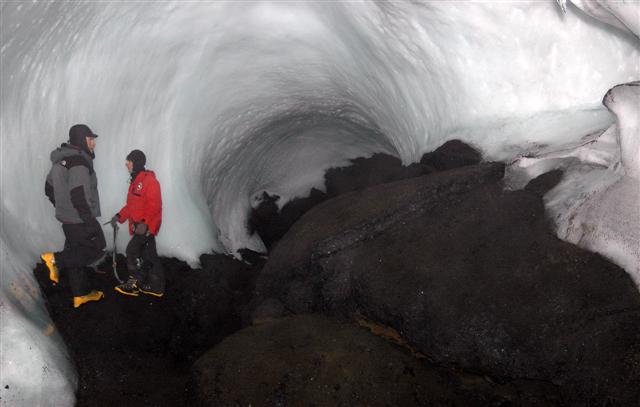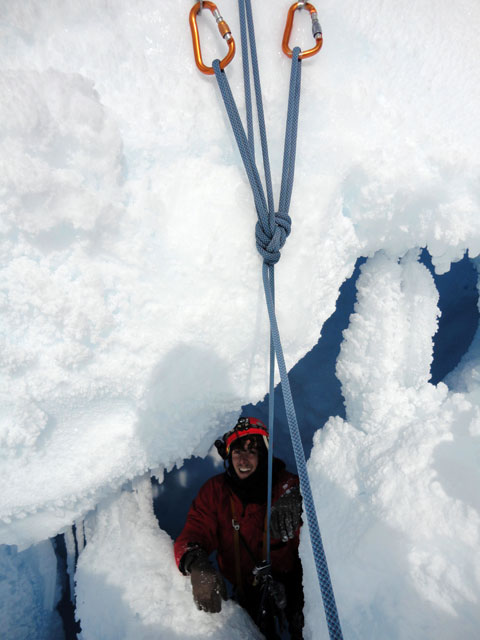|
Clean conductNew rules proposed for entering ice caves on Mount ErebusPosted October 26, 2012
There are few places in Antarctica that have been studied as long as Mount Erebus That interest has necessitated the creation of a “code of conduct” to ensure that the scientific values represented by the ice caves, from biological to geological, are protected, according to officials with the National Science Foundation’s Office of Polar Programs “They’re one of the more vulnerable areas because they have warmer soil temperatures, which means they can be more easily harmed by more temperate plants and microbes,” explained Adrian Dahood, environmental policy specialist at NSF OPP, which manages the U.S. Antarctic Program (USAP) Research on the 3,794-meter-high volcano near McMurdo Station Gas and steam also escape from the flanks of the volcano through fissures called fumaroles. PhD student Aaron Curtis at NMT, who has made the ice caves the focus of his thesis work, has found that the steam-carved structures play an important role in how gas and heat escape from Erebus. [See related article — Subterranean survey: Ice cave research finds connection between heat, gas and pressure.] “The caves are really controlled by these discrete gas vents. That really changes the model for how the caves are developed and how they relate to the volcano and the plumbing system of the volcano,” he explained. The microclimates within the caves are far different from what’s generally found around Erebus, where surface conditions average nearly minus 33 degrees Celsius with little humidity. Inside the caves, temperatures are typically around 0C with relative humidities up to 100 percent. Levels of carbon dioxide are also unusually high, leading Curtis and colleagues to believe that the degassing of CO2 occurs mainly at the cave vents. It’s in these dark and wet environments where Hubert Staudigel “We can practically go inside a volcano through these ice caves, into the dark environment where life has to survive in the absence of light,” said Staudigel, a research geologist at Scripps Institution of Oceanography Except some of the caves aren’t that pristine, as Laurie Connell Research and visits by mountaineers has naturally led to human contamination, particularly around caves closest to the field camp known as Lower Erebus Hut. Something as seemingly innocuous as food crumbs accidentally dropped in a cave or smoking in the protection of an ice cave may have an impact, according to Dahood. “People have just been doing research and doing whatever they wanted to do, so now we’re restricting activity until we can put in place a formal code of conduct,” she said. The United States presented a white paper to the Antarctic Treaty Consultative Meeting (ATCM) In the interim, the NSF recently approved a temporary moratorium on visits to all ice caves unless for scientific research, and is temporarily restricting access to pristine caves except for purposes of collecting data on microbial communities. In those cases, scientists must use clean-access protocols, such as wearing Tyvek suits inside the ice caves. “I think it’s great we’re finally having this conversation. It’s something that should have happened 30 years ago when the caves were first entered, and is especially important now with all of the attention the caves are getting,” Curtis said, referring to a series of high-profile media stories, including a feature this summer in National Geographic magazine about Mount Erebus |



For USAP Participants |
For The Public |
For Researchers and EducatorsContact UsU.S. National Science FoundationOffice of Polar Programs Geosciences Directorate 2415 Eisenhower Avenue, Suite W7100 Alexandria, VA 22314 Sign up for the NSF Office of Polar Programs newsletter and events. Feedback Form |




